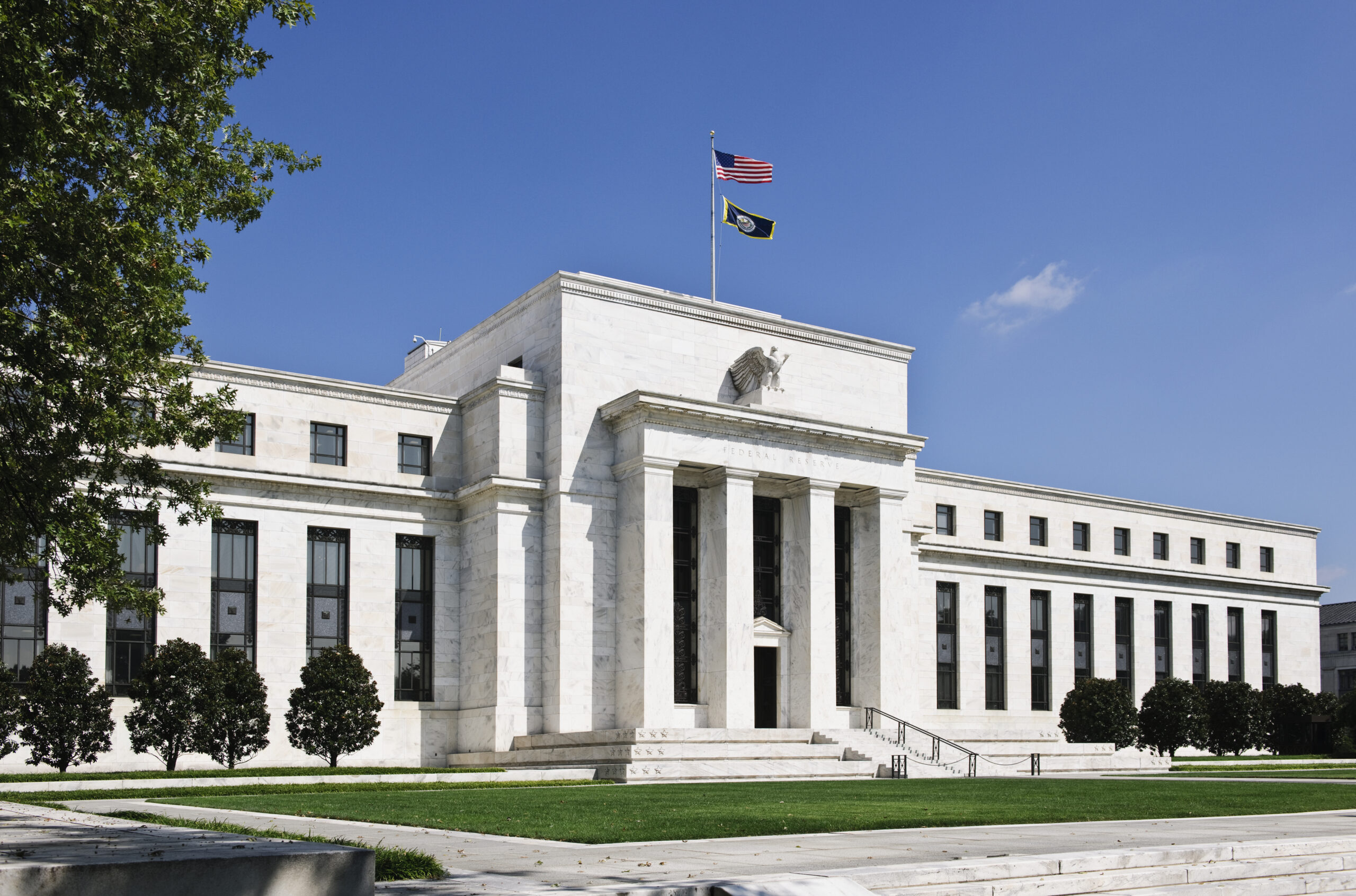The Federal Reserve’s rate cuts in 2024 reignited a debate familiar to investors: do easing cycles extend expansions or signal looming recession? With inflation still a threat, the Fed’s next move carries real consequences for portfolios. History offers a guide. Past cycles reveal how monetary shifts have influenced recessions, bear markets, and investment styles leadership, lessons investors can use as they navigate today’s late-cycle environment.
Echoing Milton Friedman’s observation regarding the “long and variable lags” of monetary policy, this post examines historical Fed rate cycles to assess their relationship across a variety of market dynamics.
By analyzing past data, we aim to provide insights into how monetary policy actions have historically influenced yield curves, style leadership, and economic outcomes — insights that can help investors interpret today’s cycle.
KEY OBSERVATIONS
Rate Cut Cycles
Two out of 10 previous rate cut cycles avoided a recession, with the 2024 cut cycle marking the 3rd out of 11, if the recession is avoided in the current cycle.
Equity style performance has been extremely mixed after cuts across both recessionary and non-recessionary periods.
Rate Hike Cycles
Across 12 rate hike cycles since 1965, we have experienced 10 yield curve inversions and eight recessions, if the current inversion continues to avoid a recession.
The only hike cycle that included an inversion but avoided a recession was 1966, (similar to current period) coincided with a ~3% deficit/GDP fiscal expansion, like the ~3% fiscal expansion over the past four years.
Yield Curve Inversions
The range of time of a yield curve inversion to market peak was two to 15 months for the eight out of nine yield curve inversions that preceded a recession. Currently, we sit at 35 months.
One previous yield curve inversion (1966) avoided a recession, and we saw growth, high beta, and quality styles leading performance as the curve normalized, like today.
Figure 1 presents equity market performance across three distinct periods following the Fed’s initial rate cut: months one to12, 13 to 24, and 25 to 36. While returns tend to be broadly positive, the lack of a consistent pattern across cycles indicates that outcomes are largely influenced by the specific macroeconomic environment in which each easing cycle occurs.
Figure 1: Top 1000 Returns After Rate Cuts.

Disclosures: Past performance is no guarantee of future results. All the returns in the chart above are in reference to unmanaged, hypothetical security groupings created exclusively for analytical purposes. Please see appendix for definitions and citations.
Figure 2 illustrates the historical relationship between Fed rate-cutting cycles, recessions, and bear markets. Analysis of 12 distinct cycles reveals that in 10 instances, the Fed initiated rate cuts only after equity markets had already peaked, suggesting a lag in policy responsiveness. Furthermore, recessions have typically been identified by the National Bureau of Economic Research (NBER) with a delay of four to 21 months following their actual onset. Notably, since the highly volatile monetary environment of the 1970s, the Fed has more frequently begun rate cuts prior to the formal recognition of a recession.
Figure 2: Federal Reserve Rate Cut Cycles.

Disclosures: Please see appendix for definitions and citations.
Figure 3 shows the performance of various investment styles following the initiation of Fed rate-cutting cycles. The data revealed a mixed pattern of returns, underscoring the idiosyncratic nature of each cycle. One plausible explanation for this variability is that monetary easing does not consistently align with equity market cycles, sometimes resulting in divergent investment style behavior. There just doesn’t seem to be a connection between rate-cut cycles, recessions, and market risk behavior, making style persistence impossible to anticipate.
Figure 3: Style Excess Returns 1-Year After First Rate Cut.

Disclosures: Past performance is no guarantee of future results. All the returns in the chart above are in reference to unmanaged, hypothetical security groupings created exclusively for analytical purposes. These are hypothetical styles based on describing characteristics. Please see appendix for definitions and citations. Excess Return is Annualized Return over the Top 1000 Portfolio.
Since 1965, there have been 12 distinct rate-hiking cycles, of which eight culminated in recessions, 10 were preceded by yield-curve inversions, and nine coincided with bear markets (Figure 4). The median duration of these cycles is 18 months, ranging from 12 to 39 months, while the median increase in the federal funds rate was 3.75%, with a range between 1.75% and 13%. The median time from the start of a hiking cycle to the market peak preceding a recession was 22 months, with a range of four to 51 months.
Figure 4: Federal Reserve Rate Hike Cycles.

Disclosures: Please see appendix for definitions and citations.
In the majority of rate-hiking cycles, the Fed continued to tighten monetary policy even after equity markets had reached their peak. This pattern reinforces the long-held adage that bull markets are not ended by old age, but by the actions of the Fed. While this aggressive stance often contributes to economic contraction, there are instances where the Fed has attempted to preemptively mitigate recessionary pressures.
In five of the eight recessions observed since 1965, the Fed began cutting interest rates prior to the official onset of economic contraction, indicating a proactive policy shift aimed at cushioning the economy. However, as these five episodes illustrate, preemptive rate cuts do not always succeed in averting recessions, underscoring the limitations of monetary policy once broader economic momentum begins to deteriorate.
The performance of investment styles in the year following the end of rate-hiking cycles has been mixed, reflecting the cycle-specific nature of monetary policy and market dynamics. This variability likely stems from monetary cycles not consistently aligning with equity market cycles. In the 1970s, for example, the Fed often transitioned directly from hiking to cutting rates, making post-hike and post-cut return profiles effectively indistinguishable.
One historical pattern that continues is that high beta stocks are typically among the best or worst performers and value and quality stocks are often better than average and rarely amongst the worst. This observation is also persistent following the end of hiking cycles.
Figure 5: Style Excess Returns 1 Year After Last Rate Hike.

Disclosures: Past performance is no guarantee of future results. All the returns in the chart above are in reference to unmanaged, hypothetical security groupings created exclusively for analytical purposes. These are hypothetical styles based on describing characteristics. Please see appendix for definitions and citations. Excess Return is Annualized Return over the Top 1000 Portfolio.
Figure 6: Yield Curve Inversions.

Disclosures: Please see appendix for definitions and citations.
Across the 12 distinct monetary tightening cycles, 10 were accompanied by yield curve inversions. Of these 10 inversions, eight were followed by recessions, underscoring the predictive power of the yield curve as a leading economic indicator (Figure 5).
Yield curve inversions have historically coincided with both recessions and bear markets. The relationship between inversion and market peak varied significantly, ranging from 12 months prior to the inversion to 15 months after. This variability highlights the complexity of market responses to monetary policy shifts.
Two rate-hiking cycles — 1984 and 1995 — stand out as exceptions, having achieved “soft landings” without either a yield curve inversion or a subsequent recession. Conversely, the 1966 and 2022 cycles experienced yield curve inversions but avoided recessions.
The 1966 cycle is discussed in detail in our post, Bear Market Playbook: Decoding Recession Risk, Valuation Impact, and Style Leadership, where we attribute the absence of recession to highly stimulative fiscal policy. However, this policy backdrop ultimately contributed to the eventual recession and bear market of 1968.
Parallels can be drawn between the fiscal environment of the mid-1960s and the current economic landscape. In both periods, elevated deficit spending supported economic activity. The inversion that began in 2022 ranks as the longest and third most severe in terms of duration and depth. Despite these adverse signals, the US economy and labor market have demonstrated remarkable resilience.
Consistent with our two prior scenarios, the performance of investment styles in the year following a yield curve inversion (Figure 7), has exhibited considerable dispersion, underscoring the cycle-dependent nature of monetary policy and market behavior. Yield curve inversions may signal that the market is entering the later stages of the economic cycle. In such environments, it is not surprising to observe outperformance from quality and growth factors, which historically tend to lead during late-cycle phases due to their resilient earnings.
Figure 7: Style Excess Returns 1-Year After Yield Curve Inversion.

Disclosures: Past performance is no guarantee of future results. All the returns in the chart above are in reference to unmanaged, hypothetical security groupings created exclusively for analytical purposes. These are hypothetical styles based on describing characteristics. Please see appendix for definitions and citations. Excess Return is Annualized Return over the Top 1000 Portfolio.
The Fed’s historical interest rate cycles reveal a consistent pattern of delayed policy responses relative to market and economic turning points, underscoring the “long and variable lags” inherent in monetary policy. Yield curve inversions have proven to be a reliable recession indicator, though their timing and market impact remain variable, complicating predictive efforts.
For investors, the record shows that no single policy shift offers a clear playbook. Rate cuts have produced highly inconsistent style outcomes, underscoring the need to look beyond policy announcements to the economic backdrop. During hiking cycles, value and quality exposures have historically provided steadier performance, while high beta has been a source of both outsized gains and sharp losses. After inversions, growth and quality have often led, with high beta again adding upside potential but at higher risk.
The weight of history suggests investors should view the current easing cycle through a late-cycle lens. In 1966, the economy avoided recession as fiscal expansion extended growth, and similar conditions exist today. If that parallel holds, portfolios tilted toward styles such as quality and growth may continue to their outperformance, with general higher-beta exposure being favored across styles.
At the same time, inflation remains the swing factor: a renewed rise could force the Fed back to tightening, historically creating challenging market environments. For investors, the imperative is to position for resilience while staying ready to adjust if policy pivots again.
Appendix & Citations
Figures 2, 4 and 6: Federal Reserve Cycles Data Tables
S&P 500 Index Levels. FactSet, 2025.
Blinder, Alan. 2023. “Landings, Soft and Hard: The Federal Reserve, 1965-2022.” Journal of Economic Perspectives — Volume 37, Number 1 — Winter 2023 — pages 101–120
Federal Reserve Bank of New York. The Yield Curve as a Leading Indicator. https://www.newyorkfed.org/research/capital_markets/ycfaq.html.
Federal Reserve Board. Open Market Operations. Board of Governors of the Federal Reserve System, 18 Dec. 2024. https://www.federalreserve.gov/monetarypolicy/openmarket.htm.
Federal Reserve Board. Changes in the Intended Federal Funds Rate, 1971–1992. 29 Aug. 2019. Board of Governors of the Federal Reserve System. https://www.federalreserve.gov/foia/files/20190829-changes-intended-federal-funds-rate.pdf
National Bureau of Economic Research. US Business Cycle Expansions and Contractions. https://www.nber.org/research/data/us-business-cycle-expansions-and-contractions.
U.S. Bureau of Economic Analysis, Real Gross Domestic Product [GDPC1], retrieved from FRED, Federal Reserve Bank of St. Louis; https://fred.stlouisfed.org/series/GDPC1, May 1, 2025.
Board of Governors of the Federal Reserve System (US), Federal Funds Effective Rate [FEDFUNDS], retrieved from FRED, Federal Reserve Bank of St. Louis; https://fred.stlouisfed.org/series/FEDFUNDS, September 5, 2025.
Figures 1, 3, 5 and 7: Performance Charts
Data Source: Compustat
Calculation: Hartford Equity Modeling Platform
Style and Time Period Definitions:
Value: US top 1000 stocks top 30% based on composite value as defined by multiple equally weighted valuation metrics to arrive at an aggregated valuation metric. Valuation metrics include: P/E, EBITDA/EV, operating cash flow/EV, revenue/EV, and B/P Yield (used only in financials and real estate as a replacement to EBITDA/EV), then cap weighted.
Low Volatility: US Top 1000 Stocks top 30% based on a Composite Volatility score defined by multiple equality weighted volatility metrics to arrive at an aggregated volatility metric. Volatility metrics include three year weekly beta and six-month daily standard deviation, then cap weighted.
High Volatility: US top 1000 stocks bottom 30% based on a composite volatility score defined by multiple equality weighted volatility metrics to arrive at an aggregated volatility metric. Volatility metrics include three year weekly beta and six-month daily standard deviation, then cap weighted.
Dividend: US top 1000 stocks top 30% based on trailing 12-month dividend per share divided by current share price, then cap weighted.
Quality: US top 1000 stocks top 30% based on gross profits to assets, then cap weighted.
Growth: US top 1000 stocks top 30% based on five years sales growth, then cap weighted.
SMID: US mid-sized and small-cap stocks representing the smallest 15% and 13% of stocks respectively, excluding the very smallest 2% which are classified as microcap, then cap weighted.
Mega/Large: US mega and large market cap stocks with mega cap representing the largest 40% and large cap representing the next largest 30% of the universe, then cap weighted.
Top 1000: US Top 1000 stocks, cap weighted.
Yield Curve Inversions are defined by the 10-year Treasury yield minus the three-month Treasury yield.


























